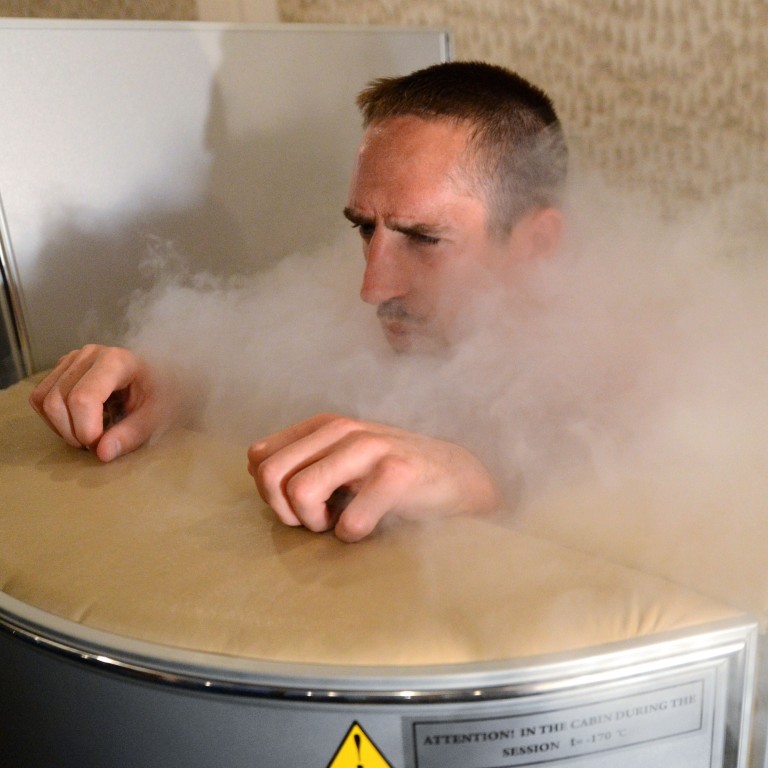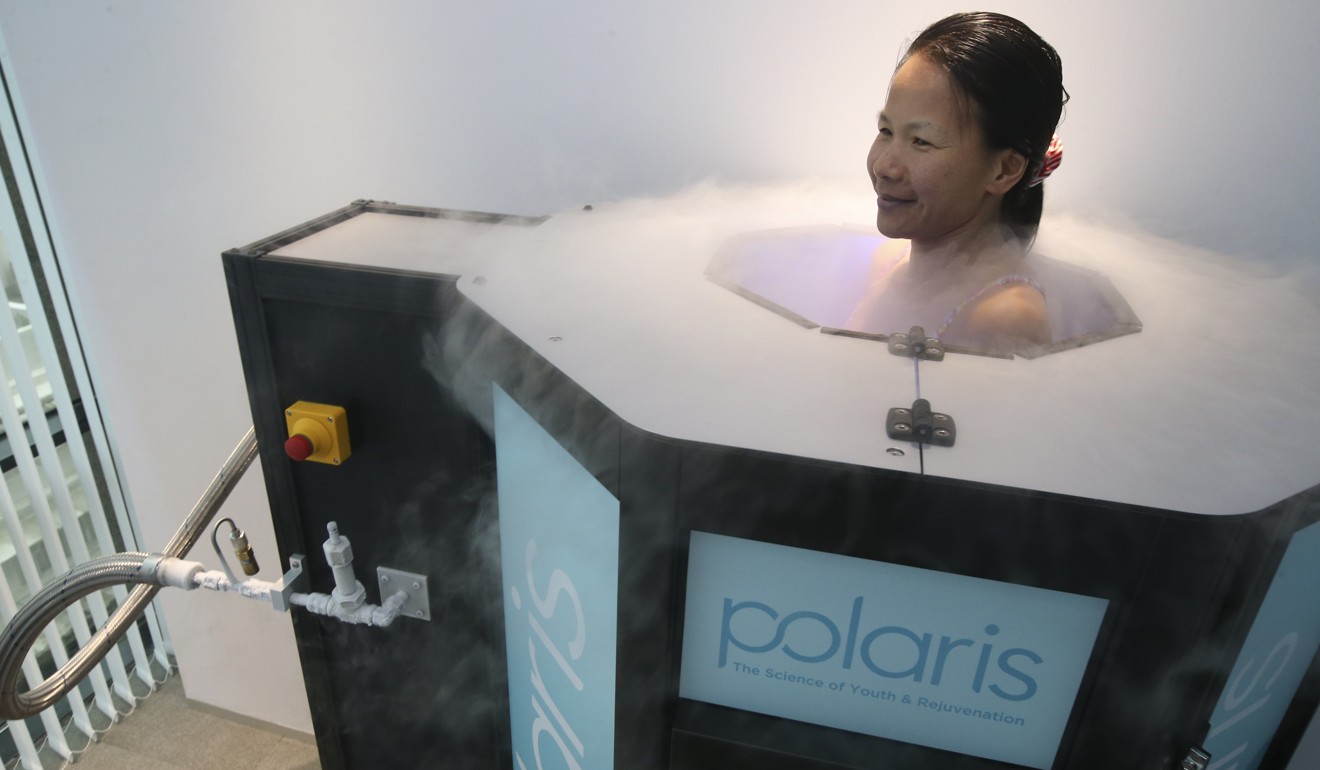
Cryotherapy: why are so many athletes turning to the ice-cold treatment for recovery?
- It looks like something out of a science fiction film, but exposing yourself to freezing temperatures is becoming all the rage in the sporting world
The social media posts are popping up like crazy: Franck Ribery, Michael Phelps, Gareth Bale, LeBron James and Floyd Mayweather all standing in metal tubes with their heads popping out, surrounded by white mist.
While it looks like something out of a science fiction film, the rise of cryotherapy for athletes is real, and the scientific literature is gaining traction.
The practice, which involves people exposing their bodies to extremely cold temperatures (sometimes -104 degrees Celsius) for a few minutes, now has devout followers in various athletic disciplines. The routine of ice baths has been around a long time, however cryotherapy takes things to the next level.
Cryotherapy machines, which cost at least US$30,000, commonly use liquid nitrogen to create a freezing cold temperature.
A Harvard Medical School blog post noted cryotherapy may “reduce soreness in the short term and accelerate the perception of recovery after certain activities” but that it does not significantly alter the amount of muscle damage (as reflected in blood tests) after intense exercise.
A 2014 study in Northern Ireland found no more benefit from cryotherapy on specific injuries than regular ice packs, however it did note that cryotherapy has been shown to have a consistent effect on animal models when it comes to “important cellular and physiological events associated with inflammation after injury”.
However, the latest large scale study, done out of Italy and published in 2017, looked to update all the literature on “whole-body cryotherapy”.
The study said most of the other studies completed found cryotherapy was effective in relieving something called the “symptomatology” of the various sets of inflammatory conditions that regularly impact athletes. This ranged from reducing oxidative stress (such as lactic acid), hormone production, bone metabolism and skeletal health.

Outside athletic performance, studies have also shown cryotherapy is effective in treating rheumatism, which is any disease caused by inflammation and pain in the joints, muscles, or fibrous tissue, most notably rheumatoid arthritis.
There was also shown to be some benefits when it comes to depression, anxiety and a variety of mood disorders as cryotherapy has an impact on levels of various substances related to the body’s overall metabolic functions including cortisol and adrenaline.
One of the most famous proponents of overall cold therapy and its impact on the body is Dutch extreme athlete Wim Hof. The 59-year-old famously known as the “Iceman” holds multiple Guinness World Records including the fastest half-marathon time on ice and snow.
Hof promotes deep breathing exercises along with cold exposure. He was the subject of a 2017 bestselling book, What Doesn’t Kill Us, which was written by The New York Times investigative journalist Scott Carney, who originally went to visit him in hope of exposing Hof as a fraud, but ended up adopting his teaching methods.
One of the most famous early adopters of cryotherapy is boxer Mayweather, who regularly uses the treatment after training sessions. NBA basketball superstar LeBron James also regularly uses cryotherapy to aid in recovery as well as ice baths after games.

